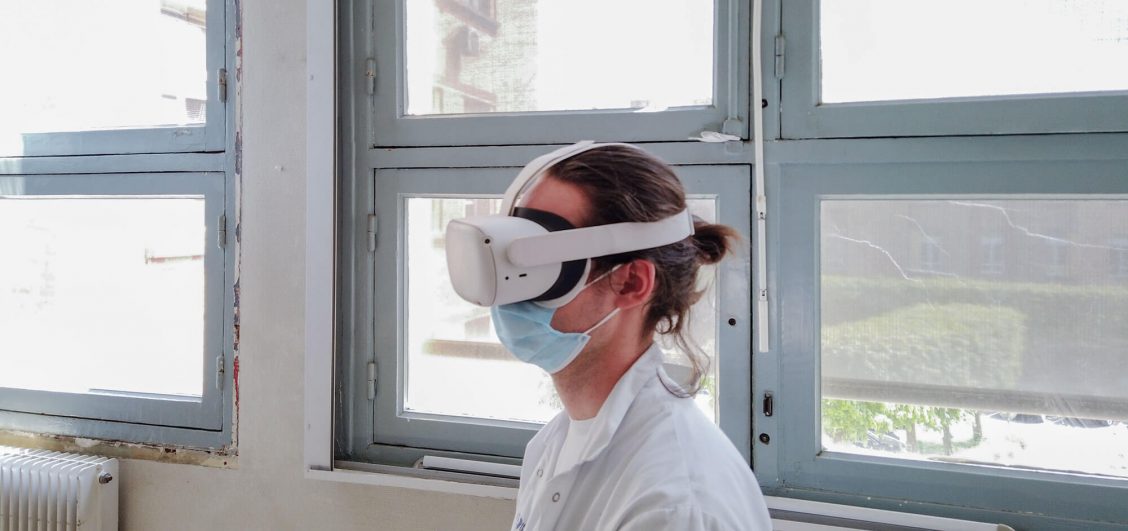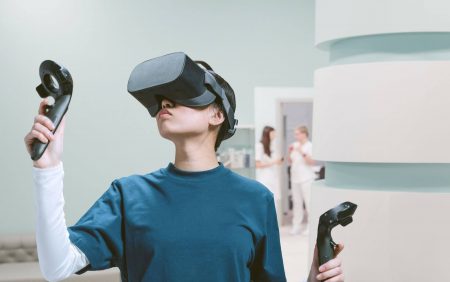The potential of immersive technologies in healthcare training
Speakers:
- Laura Limonta, Medical Doctor, graduate of the University of Havana, thesis student and Research Project Manager at Uptale
- Valéria Martinez, Anaesthetist and President of the French Society for the Study and Treatment of Pain (SFETD)
- Nicolas Couturier, APAC Business Development Manager
In 1996, V.S. Ramachandran and D. Rogers-Ramachandran published an article entitled « Synaesthesia in Phantom Limbs Induced with Mirrors ». This illusion enables an individual to visualize the reflection of their intact limb using mirrors, thus alleviating phantom limb syndrome. This innovative approach has revealed the significant influence of alternative realities on our cognitive processes.
This scientific breakthrough also underlines the immense potential of virtual reality in healthcare and medical training.
For example, it can be used to simulate complex situations, or to better prepare students for the practical exam without increasing the number of teachers required.

The benefits of Virtual Reality (VR) in healthcare
« VR has made me feel more comfortable and confident about performing my first medical procedures. »
— Student who tested the “morphine titration” VR module on Uptale

The fundamental elements that make VR a gamechanger
Immersion
Virtual reality offers total immersion in simulated environments, eliciting a profound sense of presence. Immersion goes far beyond passive observation; it's an interactive, immersive experience that encourages active involvement on the part of the learner.
Adaptability
Emotions
It fosters a deep emotional connection with the content. It represents a real catalyst for deep understanding and lasting retention of information, particularly in complex areas such as medical situations.
Use case: Morphine titration simulation for medical students
A study carried out by UVSQ on morphine titration revealed some worrying findings:
- 85% of students know how to explain the procedure
- 25% know how to do it
- and only 5% have already put it into practice in a real-life context
Faced with this disparity between theory and practice, UVSQ initiated a virtual reality morphine titration simulation project for its medical students. The objectives of this initiative were to:
- Raise teachers’ awareness of new educational technologies and their potential to enrich medical learning.
- Ensure that students feel confident in their first experience of morphine titration at the end of their studies.
- Encourage students’ autonomy by reinforcing their practical skills through realistic virtual reality simulations.
Virtual reality has proven its effectiveness in a multitude of therapeutic fields, including mental health pain management.
Since 2015, there has been a decrease in VR headset prices and an increase in the progress of headset design making this technology more comfortable and accessible than ever, even among the elderly.
How to create a good instructional scenario
Writing a teaching scenario
- Reflection on priority messages
- Multidisciplinary group
Filming
Using locations and actors resembling reality
Scenario adjustment
- Balance between oral and written messages
- Sequence progression technique
- Gamification
Experience logistics
Provide rooms with adequate space, connections and sound equipment



